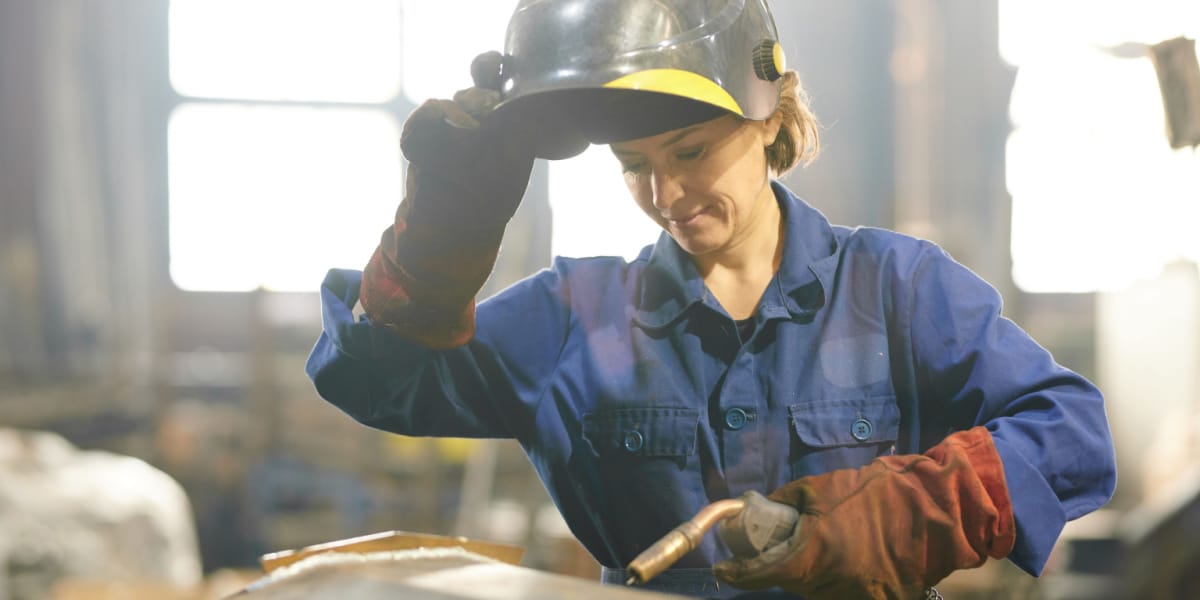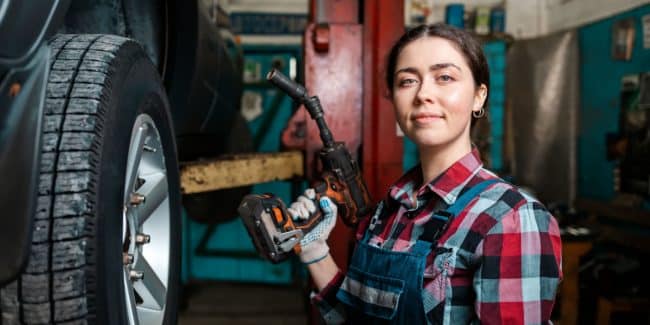
Women in Trade: The Rise of Women in the Workforce
During World War II, with men joining the military, their jobs needed competent and skilled replacements, and women were up to the task, in part thanks to the Rosie the Riveter campaign effectively pushing for female recruitment into the defense industry.
After the end of the war, the cultural and societal expectations were that these women in trades would transition back to their traditional roles in the home. The seeds, though, were already sewn for a workplace revolution. Though female employment dropped for a few years following the end of WWII, the latter half of the 20th century would see the number of women in the workforce grow more than 256%.
Views changed regarding what constituted a “man’s job” vs. a “woman’s job,” leading to historically male occupations seeing far greater gender equality, and as a result of that shift, more women than ever before began to — and still do — find jobs as welders, electricians, and plumbers, alongside other skilled professions.
Why More Women Are Joining the Skilled Trade Workforce
Among the many reasons women are seeking trade jobs is the pay offered by them. While the U.S. Government Accountability Office reports that women earn, on average, 82 cents for every dollar that men earn, the National Association of Women in Construction states that the gap closes to 95.5 cents in that field.
Another reason is that pioneering women in trades have opened doors and become advocates. Girls and young women have role models they can look up to, ask for advice, and train under.

Schools and employers alike are, as a result, seeing an increased push for hiring more diverse candidates, and pre-apprenticeship programs are providing women with greater opportunities to find solid apprenticeships.
Popular Industries and Career Paths
Trade jobs offer excellent security thanks to a skills gap, which means employers have a shortage of top-notch workers. Therefore, untapped sources of labor are going to be mined heavily in the coming years, and the more that women are able to take advantage of this need, the more that gap will close.
Here is a collection of trade positions that will be in high demand over the next decade:
Welders
Average Base Salary: $44,518 per year
Welders are poised to be one of the most in-demand trade professionals in the coming years. It is said that by 2026, 336,000 new welders will be needed.
Electricians
Average Base Salary: $59,082 per year
Jobs for up-and-coming electricians are set to grow by 9% by 2030 due to the high numbers of retirement among existing electricians, as well as thanks to new technologies emerging, such as solar and wind energy production.
Plumbers
Average Base Salary: $55,783 per year
By 2031, an estimated 9,100 new plumbing jobs will open up. While that isn’t as much as welders and electricians, plumbers enjoy other perks, such as an excellent work/life balance and a solid median income.
Car Mechanics
Average Base Salary: $62,543 per year
With even less than a year of experience, the average salary for a mechanic remains higher than $57,000 a year. Currently, less than 4% of mechanics are tradeswomen, which means there’s plenty of room for growth in the field.
Benefits of Being a Tradeswoman
Even though trade jobs are seeing increasing numbers of women in the workforce, there are still far more men in such positions, so businesses looking to boost diversity are bound to seek skilled tradeswomen to join their ranks. Additionally, with the aforementioned skills gap in mind, qualified people of either gender will become valuable assets.

The cost of entry is reasonably low as well; in fact, women considering achieving a traditional college degree may want to consider avoiding a university altogether. College is expensive compared to trade school, and instead of spending more than $100,000 for a four-year degree, a one-year trade school education can be as relatively cheap as $15,000.
Ultimately, women in trade jobs not only stand to earn good money, but they can also get into secure jobs quickly with less (or zero) debt.
Challenges for Women in the Trades
Despite improvements and increasing opportunities, a tradeswoman seeking to enter traditionally male-dominated occupations is likely to face discrimination and sexual harassment and have difficulty securing solid mentors. Breaking through and rising to the top of an organization is definitely an uphill battle for women in trade jobs, for now.
Crane Point Supports Women in Skilled Trade Industries
We believe in supporting women in skilled trades, and we prove it by gladly hiring women in skilled trades. Crane Point employees represent varied backgrounds and specialties. What we have in common is that we care about our customers and take pride in what we do. If you’re looking for assistance from our skilled team, contact us today!